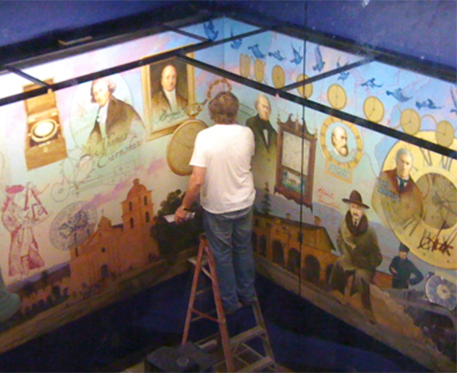
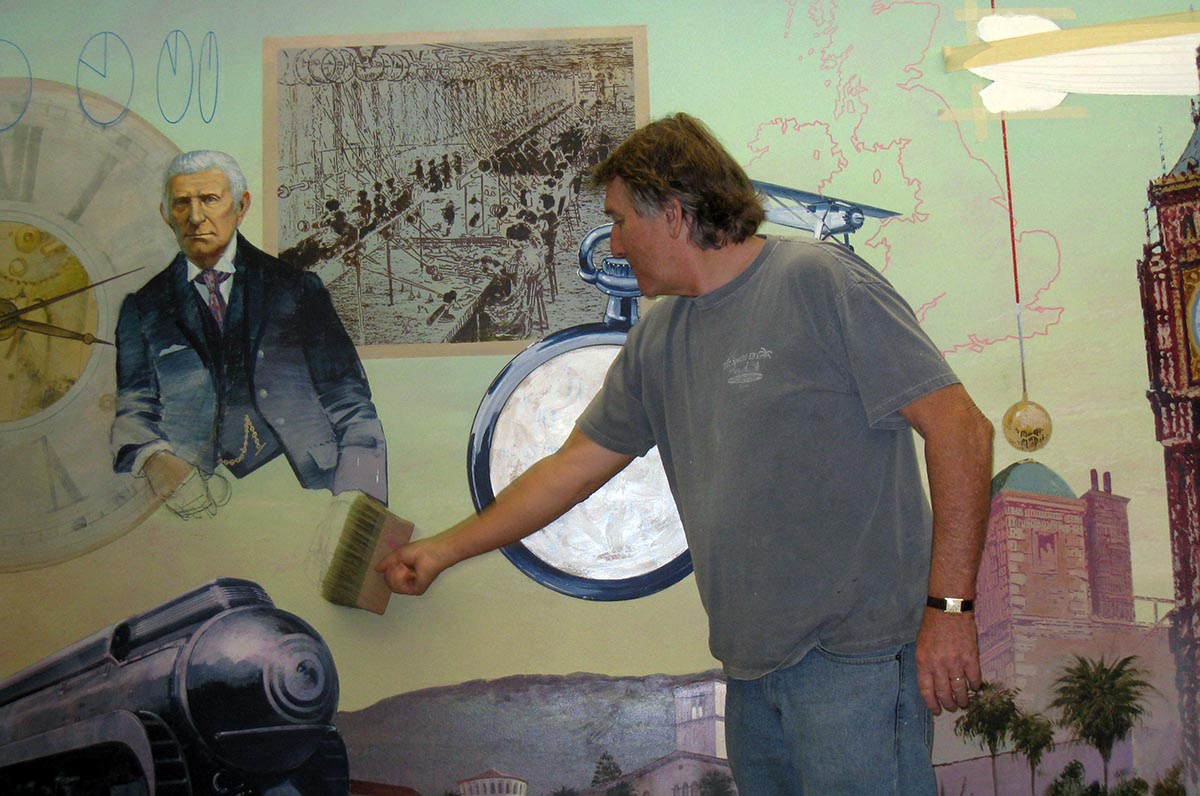
Stunning, Specially Commissioned Hand Painted Mural
Fay Bisno accepted the task of finding a world-class artist to paint a mural which would envelop the clock on 3 walls, telling artistically the history of horology from ancient times to 1929 in Santa Barbara. The search was fortuitous, fortunate and fun.
English born, London trained painter and muralist, Ed Lister, now a resident of Santa Barbara (actually living with his wife, Karin, in Fay’s childhood home) had a wealth of experience, was wonderfully talented and thrilled to become part of the Gallery team. With images provided by Will Andrewes and David Bisno, Ed, with brushes and palettes in hand, took nine months in the basement of the courthouse to produce 4 stunning, visually sumptuous panels explaining the history of time-keeping from 2500 B.C. to the 20th Century.
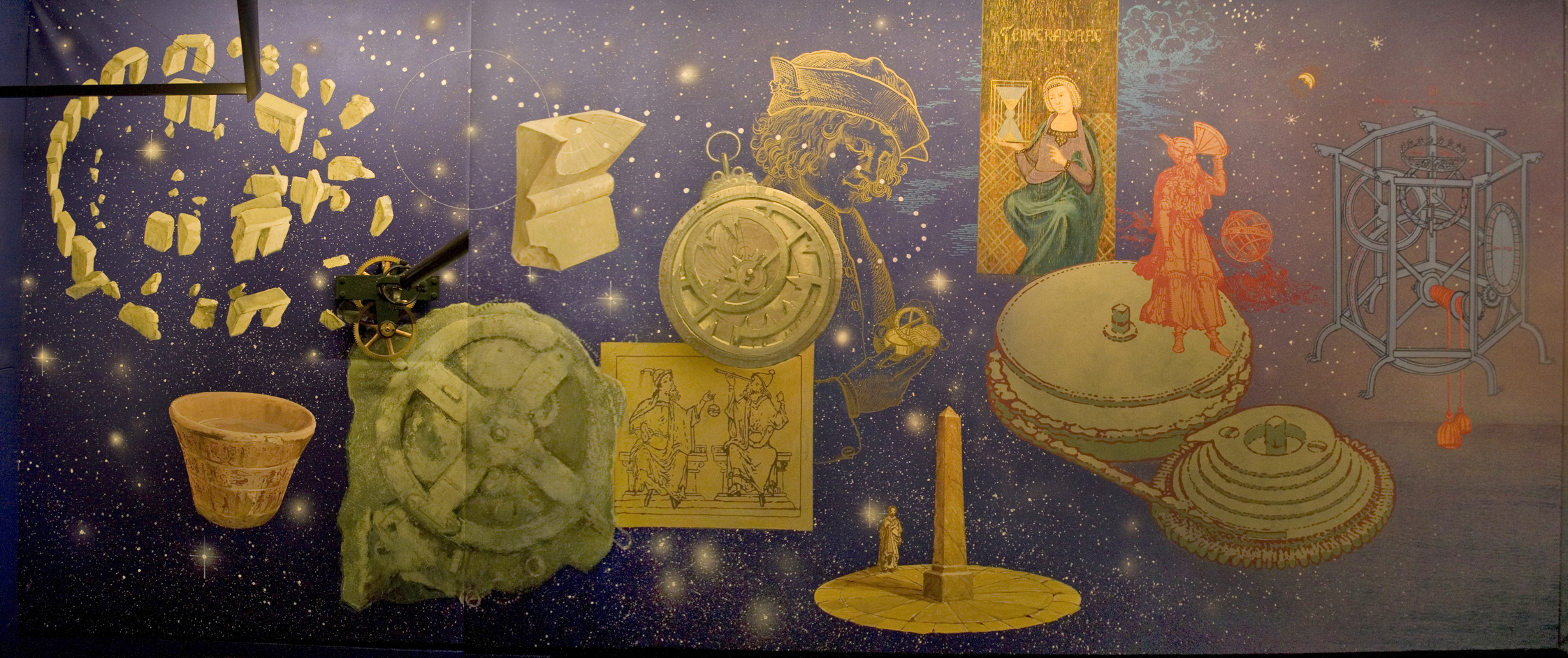
Before A.D. 1600
Looking to the heavens, timekeepers developed a number of ingenious devices.
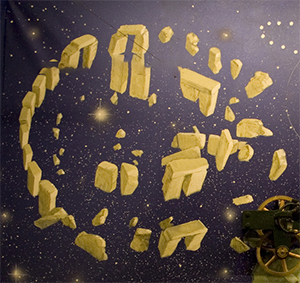
Prehistoric Stone Circles
Large standing stones date back to at least 2500 B.C. In addition to religious, mystical, or spiritual functions, they were ancient timekeepers. Taken together, their positioning and height made them celestial observatories for the prediction and recognition of eclipses, the solstice, and the equinox.
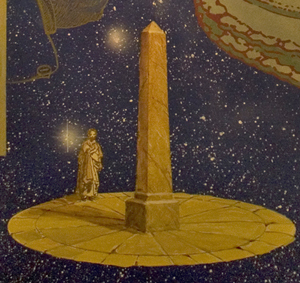
Shadow Casting Devices
An ancient obelisk and a Roman sundial ca. A.D. 100, were oriented to use the sun’s shadow on a bright day in order to indicate the minute and hour.
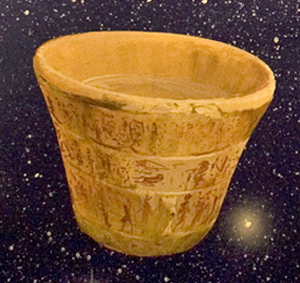
Egyptian Water Clock
This is one of the earliest known instruments of timekeeping, ca. 1600 B.C. With a constant drip of water from the vessel, the level of liquid remaining inside indicated the number of hours elapsed, whether in daylight or darkness.
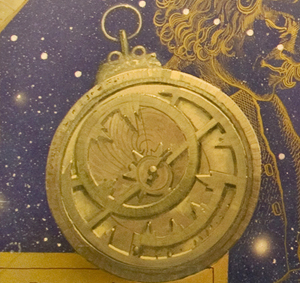
The Astrolabe
Circa A.D. 950, utilized rotating brass discs to represent the heavens and tell time by sighting the sun and the stars.

The Antikythera Mechanism
This highly complex calendar computer with complicated gearing, ca. 80 B.C., was discovered on a ship that sank off the Greek island of Antikythera. It indicated sophisticated timekeeping in ancient days.
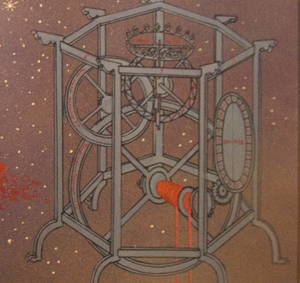
De Dondi’s Astrarium
A complex astronomical clock of the mid 1300s. It showed the hour, day, date, month, time of sunrise and sunset, and the positions of the known planets.

Between 1600 & 1800
New discoveries and inventions further the art of timekeeping.

Galileo
In 1641, discovered that a pendulum could be used to divide time.
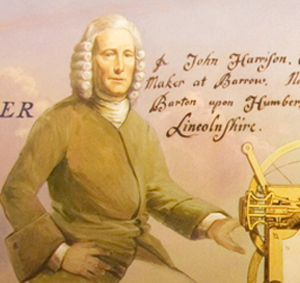
John Harrison
Won a prize of 40,000 pounds in the mid-1700s for making a clock accurate enough to determine longitude at sea.
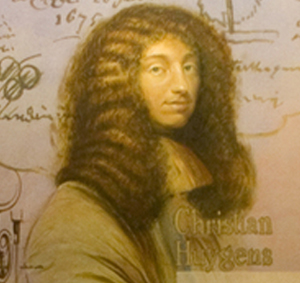
Christian Huygens
Created the first practical pendulum clock design in 1656.
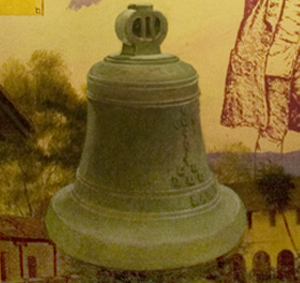
Missions and their Bells
Served as California’s clocks between the 1770s and 1820s.
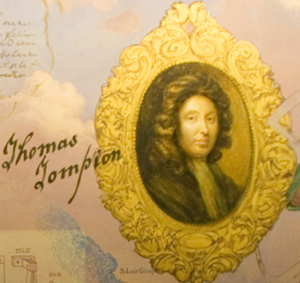
Thomas Tompion
Improved the accuracy of escapements in the 1600s.
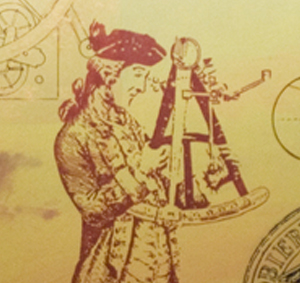
Octant and Sextant
Circa mid-1700s, used the height of the sun and stars to determine longitude and latitude.
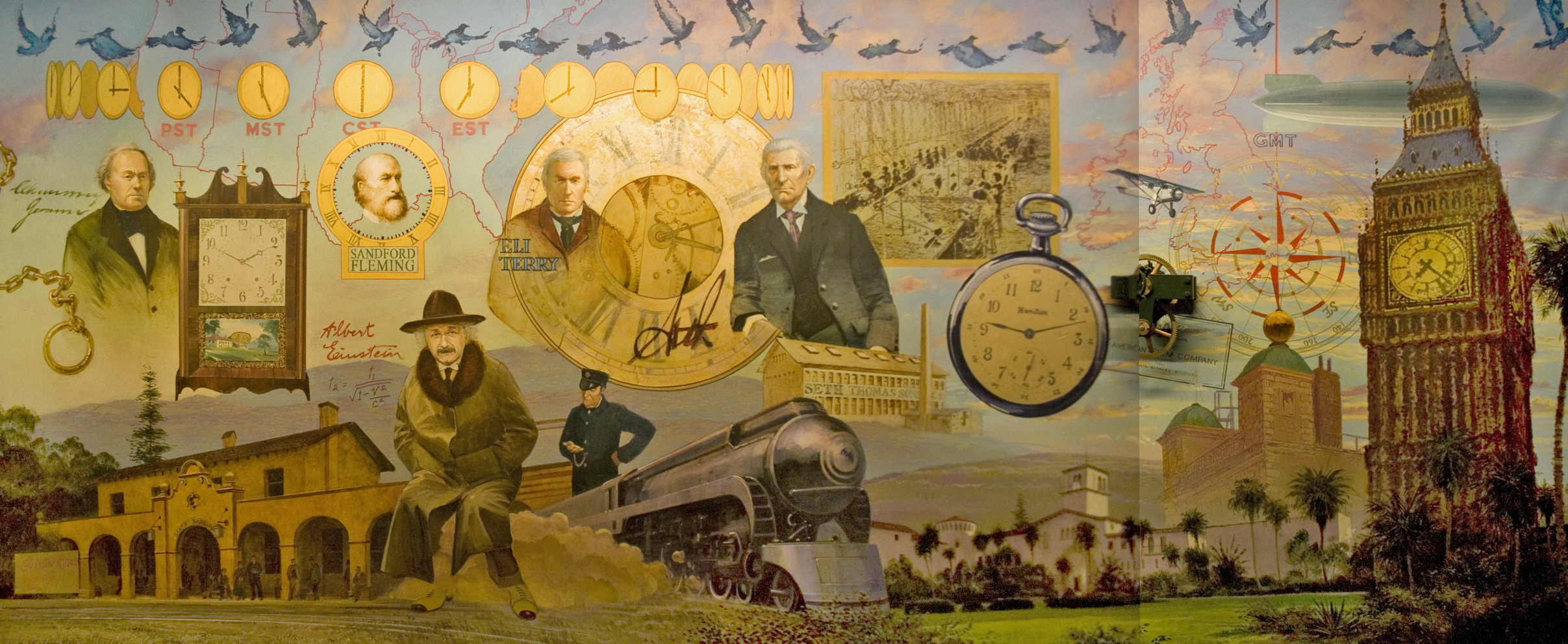
Between 1800 & 1929
The growing demands of industry and science drive dramatic advances.
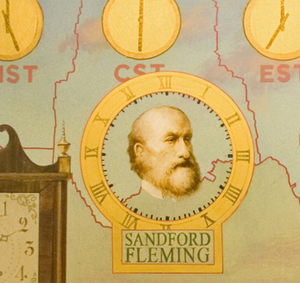
Time Zones Established
As railroads expanded across North America, Scottish-born Canadian Sir Sandford Fleming furthered the adoption of the current system of time zones.
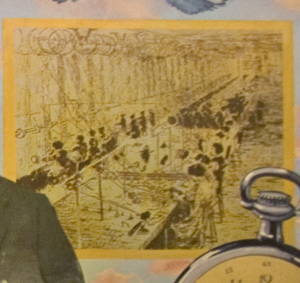
Waltham Watch Factory
Just west of Boston, was the first to mass produce watches, beginning around 1850.
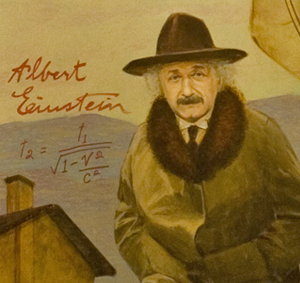
Albert Einstein
The “father of relativity,” visited Santa Barbara in the early 1930s. He often used a hypothetical train to explain his famous equation that shows time slows as speed increases.
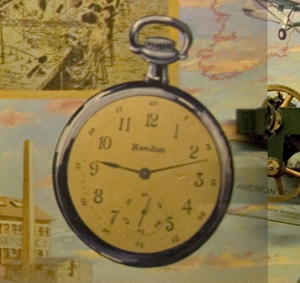
Hamilton Watch Company
Became known as the premier manufacturer of highly accurate timepieces or America’s railroads.
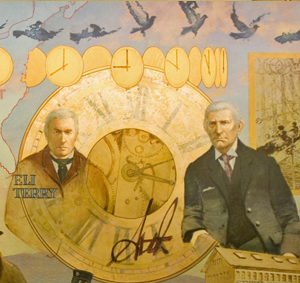
Eli Terry & Seth Thomas
Eli Terry, a New England clockmaker in the early 1800s, sold his Connecticut factory to Seth Thomas, who went on to produce hundreds of tower clocks, including the one in this gallery.
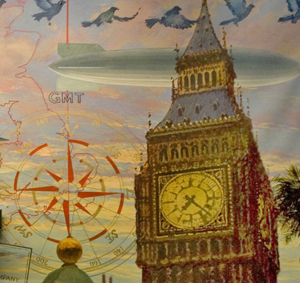
London’s Big Ben
Named for its largest bell was completed in 1859. “Westminster” chimes were adopted for use in this clock gallery.


